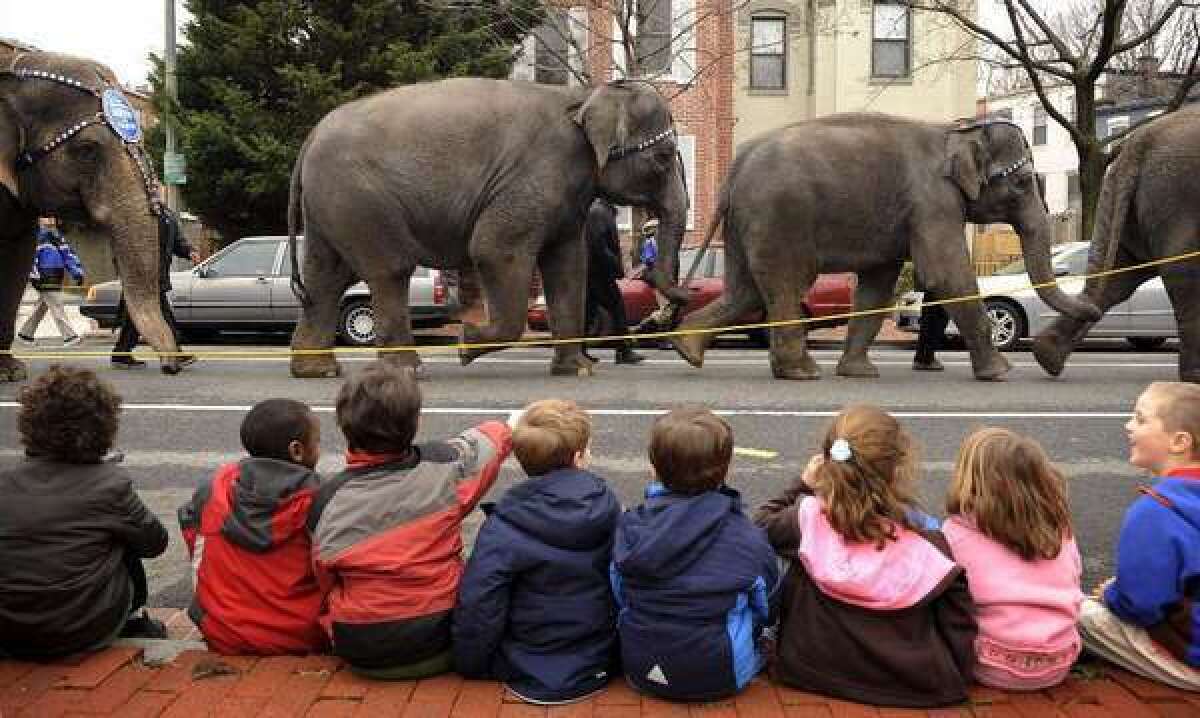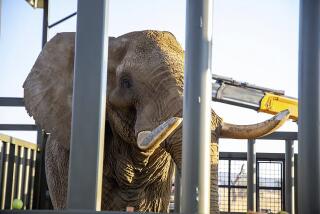Why elephants need circuses and zoos

The Times’ editorial Monday on the L.A. City Council’s proposed ban on elephants performing in traveling shows such as circuses paints a romantic picture of elephants as gentle giants. The editorial board seems to buy into the animal extremists’ idealistic scenario of happy, fat pachyderms lazily wandering the open plains of Africa or the jungles of Asia, free of disease and conflict with humans.
The reality is far grimmer. The “wild” left for these magnificent animals is rapidly disappearing. Instead, these endangered and threatened animals are often contained within park ranges by fences, or, when no fences exist, villages and fields block historic migration routes, often leading to human-elephant conflict. In Sri Lanka, an island country with the highest elephant-to-human ratio, elephants regularly raid farmers’ fields, and human-elephant conflict sometimes leads to deaths -- of both elephants and humans.
In Africa, elephants may walk for miles during the drought months to find water and food -- a harsh reality that elephants in captivity don’t have to endure. Captive elephants don’t face the threat of being killed by humans from gunshot, electrocution or poisoning as they compete for resources or because their ivory is a valuable commodity. While park rangers do what they can to protect elephants from poachers, too many are being slaughtered. Calves are orphaned and often die without human intervention.
The imaginary Eden created by animal extremists has elephants and humans coexisting without interacting and ignores the reality of thousands of years of history. In fact, Asian elephants have been working in their native lands with their native peoples for thousands of years, just as horses have in lands where horses and people are found together. The Times has not called for an end to bridles on horses, but instead has demonized the traditional tool for working with elephants.
Commands are taught first and foremost to permit personal interaction between humans and elephants, which in turn allows for the provision of better husbandry and veterinary care. These movements are not taught through force or coercion, just as you would not beat your dog at home to make him sit. Elephants at zoos and circuses are taught primarily through a series of repetition and reward. Click here for a good discussion on training elephants as well as a better explanation of the Assn. of Zoos and Aquariums’ policy referenced in the editorial.
It is a good thing that people can see elephants at the L.A. Zoo or up close through traveling circuses. The elephants act as ambassadors for their species living in their range countries. While it may seem pleasant for extremists to imagine a perfect scenario in which elephants are set free to roam the hills of California to their hearts’ content, that isn’t the world in which we live. Elephants need people to care for them in captivity and to protect and conserve them in their range lands.
ALSO:
California confronts a sea change
Bangladesh factory fire: The Wal-Mart factor
‘Dangerous UCLA’ and other problematic rankings
Deborah Olson is the executive director of the International Elephant Foundation.
If you would like to write a full-length response to a recent Times article, editorial or Op-Ed and would like to participate in Blowback, here are our FAQs and submission policy.
More to Read
A cure for the common opinion
Get thought-provoking perspectives with our weekly newsletter.
You may occasionally receive promotional content from the Los Angeles Times.










